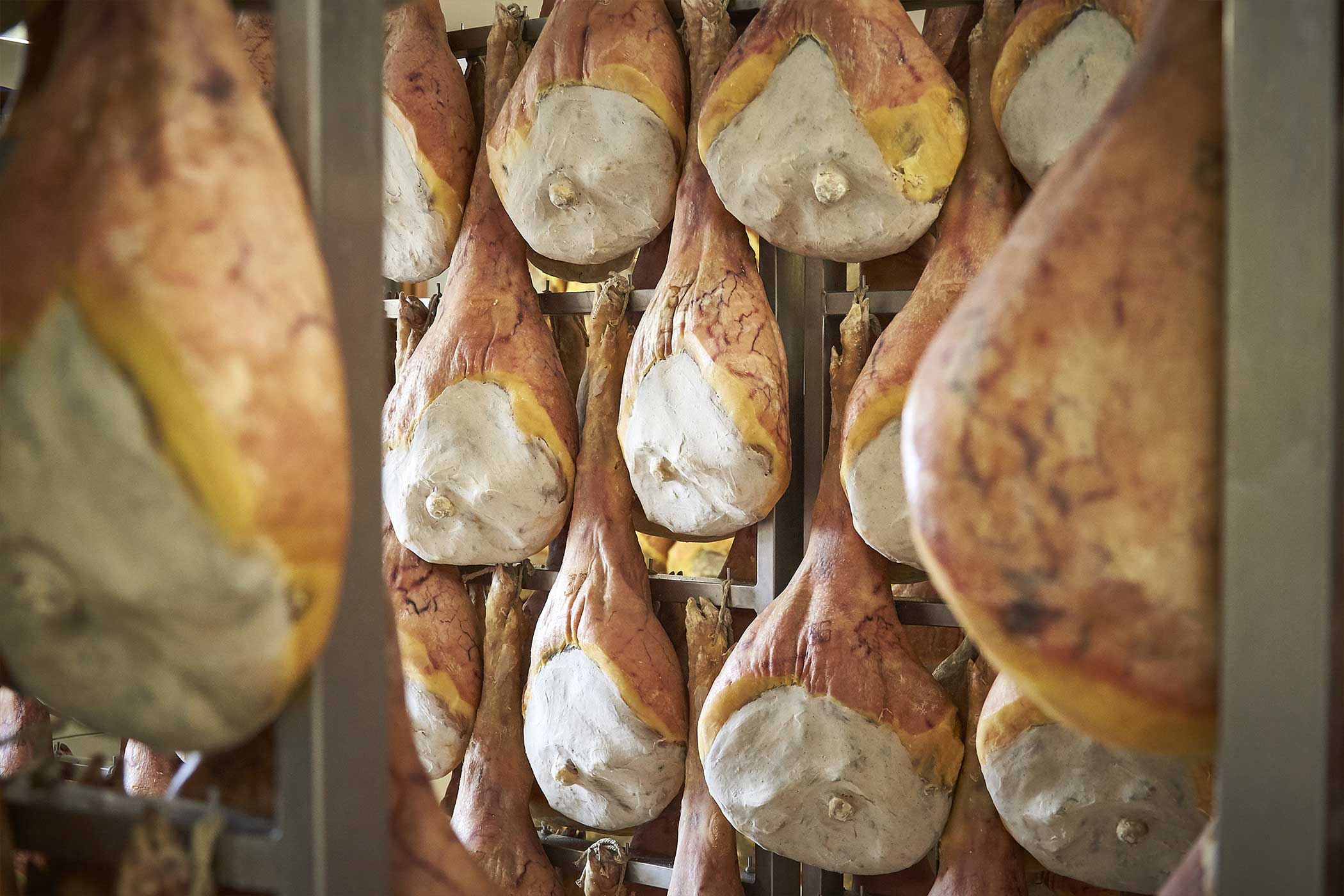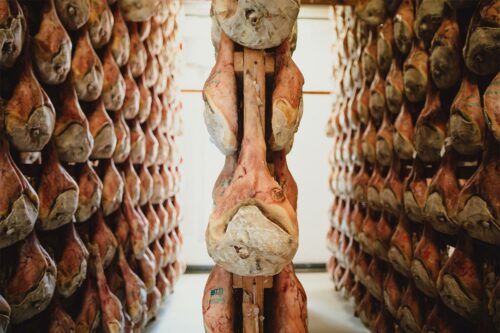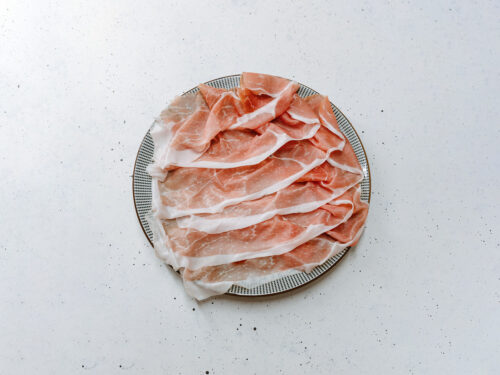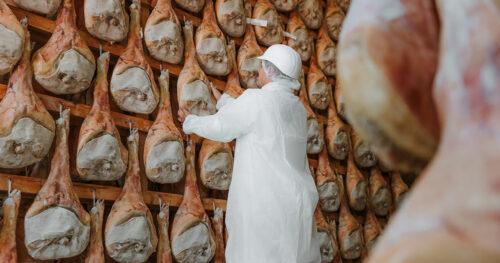Creating a Made in Italy product has various meanings, that go way beyond the mere tasting assessment. In our culture food is a vehicle for history and tradition, a tale of flavours that begins with the selection of the best raw materials that are processed with love and commitment.
The basis of the taste and authenticity of San Daniele DOP is the strict attention in the choice of excellent raw materials, few – only 3 ingredients are used – but “good”, that are carefully and rigorously selected, paying attention to every single detail.
A food such as San Daniele DOP is an expression of an ancient know-how, the one of the master prosciutto makers who have been handing down for centuries a flawless manufacturing process.
Even though years go by and processes are being refined, an inportant detail should be pointed out: the raw materials of Prosciutto di San Daniele never changed. Let’s see what they are and why thery are so special.
Pigs for the prosciutto
The quintessential raw material for Prosciutto di San Daniele is obviously the pig’s leg. But not all legs are alike: the ones used for San Daniele are produced and processed solely in Italy. They come from 3.626 selected farms, located only in 10 Northern and Central regions of the Peninsula. In particular the areas from which the raw materials come are: Friuli-Venezia Giulia, Veneto, Lombardy, Piedmont, Emilia Romagna, Tuscany, Latium, Abruzzo, Marche and Umbria.
In the farms also the animals are carefully selected: only pigs belonging to the Large White, Landrace and Italian Duroc are chosen.
The breeds in line include also mixed-race and hybrid pigs, as long as they come from selection schemes and cross-breedings compatible with those found in the Italian Herd Book. To obtain more control and safety on the origin of the pigs, an animal DNA data bank has been created, in order to avoid any kind of genetic fraud or counterfeiting.
It’s not just about the breed
But it’s not just a question of “breed”: the pigs selected for the production of San Daniele DOP must meet certain weight and size requirements .
They must on average weigh 160 kilograms, with a 10% variability range. This is established by the Product Specification that regulates the production of Prosciutto di San Daniele. Every leg must then weigh between 12,5 and 17,5 kilograms, with a constant lean to fat part ratio. Nothing is left to chance in the production of San Daniele: the fat layer must have a specific texture and a thickness of no less than 15 millimeters, rind included.
The fat of San Daniele DOP, it’s worth recalling it, mustn’t be considered “a scrap” or a non-dietary food: it has a high nutritional value precisely because it consists of saturated, poly-insaturated and mono-unsaturated fatty acids. The presence of essential fatty acids is crucial for the proper functioning of our organism: this is why the organoleptic properties of the San Daniele make it the perfect product to include in any kind of diet.
Sea salt from the Center-South of Italy
It is one of the key “ingredients” of San Daniele, the element which allows the maturing of the product and gives prosciutto a unique taste. We’re talking about sea salt, unmissable in the manufacturing of Prosciutto di San Daniele.
It’s an Italian raw material, coming from the Center-South of Italy. It is not ordinary salt but dry sea salt. The use of salt is crucial in the processing of prosciutto: the pork legs are sprinkled with dry sea salt and left to rest, for a number of days equal to their weight, at a temperature between 0° and 3 °C. This important step allows the leg to release moisture and dehydrate. In the subsequent pressing stage salt is going to penetrate deeply, giving the raw material its unmistakable flavour.
The maturing time, as well as the amount of salt are strictly dictated by the Product Specification. It’s worth noting that in recent years the Consorteum, always attentive to the issue of sustainability, decided to reduce the amount of salt in oder to reduce the environmental impact linked to the processing of San Daniele.
The unique microclimate of San Daniele del Friuli
Although “intangible”, this element matters as much as the other two above mentioned: the microclimate of San Daniele del Friuli has a key role to give prosciutto its taste and qualities.
The mild and temperate climate is the result of the special postion of the Friulian hamlet: here the Adriatic sea breeze meets the mountain winds of the Carnic Prealps. In this natural setting we also find the river Tagliamento which serves as natural thermal regulator. This unique environmental condition ensures the presence of a constant and light ventilation, making it a perfect area for the maturig process.
That is why the success of San Daniele DOP is so closely related to that of its territory.
In short, the top quality raw materials, combined with the attention to detail, the uniqueness of the climate and of the Italian farms, and the knowledge of the master prosciutto makers, give San Daniele DOP its unmistakable character.
Remember that some of the prosciutto factories where Prosciutto di San Daniele is made process meat coming from pigs that don’t belong to the DOP supply chain : this meat is intended for the production of other cold cuts – not branded San Daniele DOP – also made and matured in San Daniele del Friuli: Italian prosciutto crudo, salami, culatello, soppressa, pancetta, coppa, etc.





